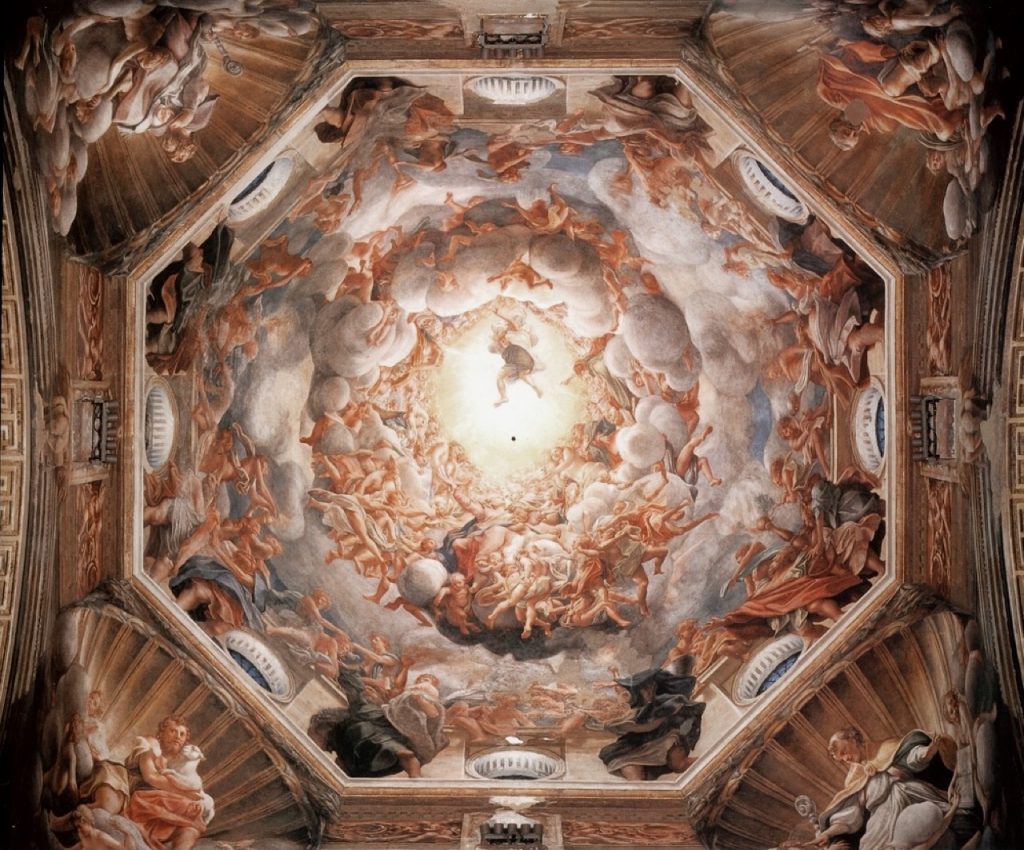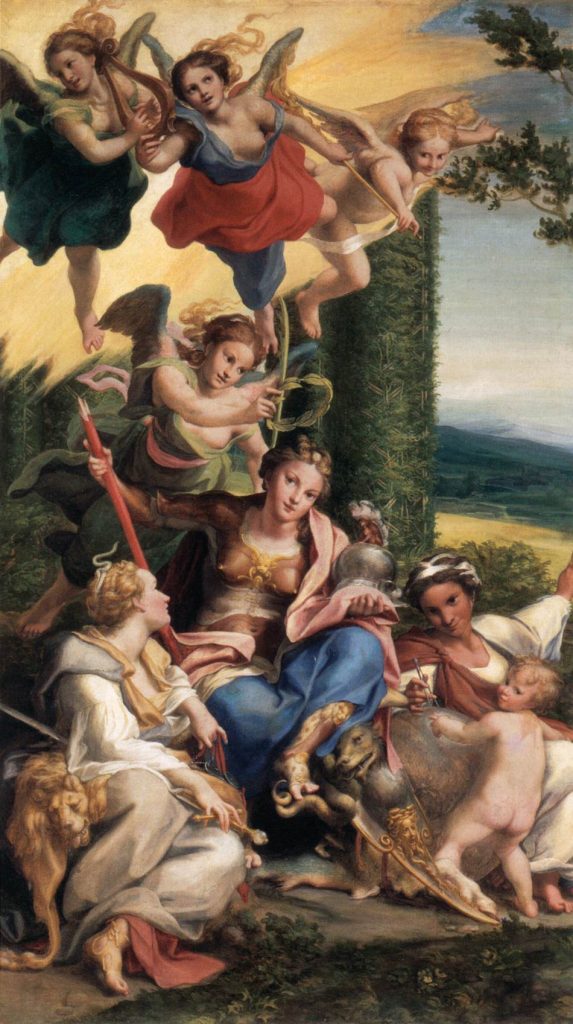Corregio 1489-1534 (Parma)
Antonio Allegri, more commonly known as Correggio, was one of the great masters of the Italian Renaissance. Although he was often overshadowed by artists like Leonardo da Vinci and Titian, he was recognized by predecessors as the most ‘progressive’ of his period. Noted for his striking use of chiaroscuro, Correggio was the pioneer of illusionist painting. His use of dynamic composition and innovative foreshortening led him to achieve dramatic spatial depth in his works, which was one of the most distinguishable features of his style.
Chiaroscuro: an Italian artistic term used to describe the atmospheric effect of strong contrasts between light and dark in a piece, particularly paintings.

While reading The Story of Art, Correggio’s The Assumption of the Virgin was one of the artworks that stood out to me the most and it became the reason I wanted to conduct my research on him. What caught my eye were the beautiful vortex of sunlit clouds and the realistic figures that populated them. The power in The Assumption of the Virgin is in the way it gives the onlooker the illusion that the ceiling had opened a portal to Heaven. Figures seem to contort as the use of extreme foreshortening is apparent. Interestingly, the fresco is even more striking in person as it illuminates the dark and gloomy space of the Cathedral of Parma. Years later, this piece of work would serve as a catalyst and inspiration for ceiling paintings of the Baroque period. The remainder of Correggio’s works include altarpieces, smaller-scale religious paintings and mythological scenes.

Adoration of the Child, oil on canvas, c. 1526 
The Holy Night, oil on wood, c. 1530 
The Mystic Marriage of St. Catherine, c. 1527 
Allegory of Virtues, oil on canvas, c. 1525-1530
References:
https://www.britannica.com/biography/Correggio-Italian-artist
https://www.nationalgallery.org.uk/artists/correggio
Gombrich, E.H. The Story of Art. 16 ed., Phaidon Press, 1995.
One reply on “High Renaissance & Mannerism”
Rayna,
Solid work on Correggio here! You have good information through your research combined with your personal thoughts and feelings for the work. Also what I’m liking is the fact that through your research into the artist you developed a personal feeling and connection to the artist you may not have had previously. That is what this exercise is all about. Good Job!
Jeff